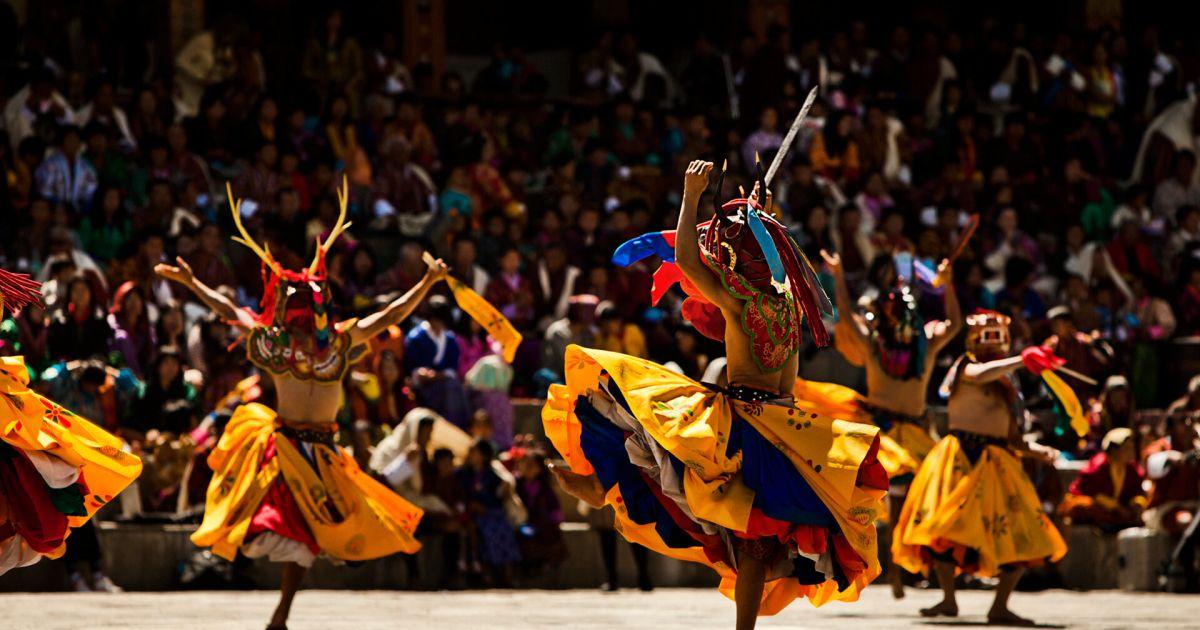The Vibrant Culture of Bhutan: A Journey Through Its Grand Festivals

Bhutan, the Land of the Thunder Dragon, is a small Himalayan kingdom filled with majestic monasteries, lush valleys, and a deep-rooted culture. One of the most beautiful ways to experience this unique country is through its festivals. Among the many, Paro Tshechu stands out as one of the most colorful and spiritually significant events in Bhutan.
If you're curious about how is Tshechu festival celebrated in Bhutan, then you're about to discover a magical world of masked dances, spiritual blessings, and strong community spirit. These festivals are more than just cultural shows—they are spiritual celebrations that bring people together and keep ancient traditions alive.
What is Tshechu?
Tshechu means "tenth day" in the local language. These festivals are held on the tenth day of a lunar month, usually dedicated to Guru Rinpoche, the saint who brought Buddhism to Bhutan in the 8th century.
Each Tshechu takes place at different times and in various regions of Bhutan. People from nearby villages travel for hours or even days to attend. They dress in their finest clothes, meet family and friends, and receive blessings. The air is filled with music, laughter, prayers, and the sound of traditional instruments.
The Grandeur of Paro Tshechu
Paro Tshechu is one of Bhutan’s most popular and grandest festivals. It is held every spring in the Paro Dzong courtyard and lasts for five days. Monks and laypeople perform religious dances wearing elaborate masks and colorful costumes. These dances are not for entertainment alone—they tell stories of good triumphing over evil and help people gain merit for the next life.
The highlight of the Paro Tshechu is the unfurling of the Thongdrel, a huge religious scroll painting. It is displayed only at dawn on the last day of the festival. Just seeing it is believed to cleanse all sins. This sacred moment brings peace, blessings, and hope to thousands of devotees.
Why Are These Festivals Important?
Festivals like Tshechu play a big role in Bhutanese life. They preserve the teachings of Buddhism, strengthen community ties, and promote harmony. For many Bhutanese, attending Tshechu is a way to purify themselves and connect with their spiritual roots.
Tshechu festivals are also an important part of Bhutan’s tourism. Visitors from around the world come to see these cultural gems. According to Bhutan's Tourism Council, over 300,000 tourists visited Bhutan in 2023, and many planned their trips around major festivals like Paro Tshechu.
Other Must-See Festivals in Bhutan
While Paro Tshechu is well-known, other festivals across the country are equally exciting:
1. Thimphu Tshechu
Held in the capital city, this is another major festival with massive public attendance and dance performances.
2. Punakha Drubchen and Tshechu
Known for its historic reenactments of Bhutanese warriors defeating Tibetan invaders.
3. Jambay Lhakhang Drup
Famous for the fire ceremony and mask dances performed by naked monks (yes, really!).
Planning Your Trip Around Bhutanese Festivals
If you're planning a trip to Bhutan, try to align it with one of the major Tshechus. Here's what you should know:
-
Visa Requirements: All international tourists (except Indian, Bangladeshi, and Maldivian nationals) need a visa and must book through a licensed Bhutanese tour operator.
-
Best Time to Visit: March to May and September to November are ideal for clear skies and festival schedules.
-
Cultural Etiquette: Dress modestly, remove shoes before entering religious places, and always ask before taking photos.
What to Expect at a Tshechu Festival
Here are a few things you can expect when attending a Tshechu:
-
Spiritual Atmosphere: The mood is joyful yet respectful. Many people meditate and pray.
-
Colorful Costumes: Locals wear their best "Gho" (for men) and "Kira" (for women).
-
Unique Food: Enjoy local delicacies like Ema Datshi (chili and cheese), red rice, and butter tea.
-
Traditional Crafts: Festival grounds often have stalls selling handmade souvenirs, textiles, and religious items.
Quick Facts About Bhutanese Festivals
-
There are over 20 major Tshechus celebrated across Bhutan annually.
-
The Thongdrel used in Paro is 30 meters tall and 45 meters wide.
-
Guru Rinpoche is also called Padmasambhava, the “Lotus Born”.
-
Bhutan follows the Lunar Tibetan calendar for its festivals.
FAQs
1. What should I wear to a Tshechu festival in Bhutan?
Wear modest, respectful clothing. Long pants, sleeves, and closed shoes are recommended. Locals wear traditional attire, and tourists are encouraged to try it too.
2. How long does Paro Tshechu last?
It typically lasts for five days and ends with the unfurling of the sacred Thongdrel at dawn on the final day.
3. Can tourists attend Tshechu festivals?
Yes! In fact, attending a Tshechu is one of the most recommended activities for tourists in Bhutan.
4. Why are mask dances important?
They are a form of religious storytelling. Each dance has a meaning and helps cleanse sins or bring blessings.
Final Thoughts
Bhutan is more than just a scenic destination—it's a land full of faith, joy, and deep-rooted traditions. Festivals like Paro Tshechu not only showcase the country’s artistic brilliance but also offer a unique glimpse into Bhutanese spirituality. And if you ever wondered how is Tshechu festival celebrated in Bhutan, now you know—it’s a celebration of life, harmony, and the divine.
So, pack your bags, book your flights, and be ready to dance with dragons and monks in the mystical mountains of Bhutan.
- Art
- Causes
- Crafts
- Dance
- Drinks
- Film
- Fitness
- Food
- Spiele
- Gardening
- Health
- Home
- Literature
- Music
- Networking
- Other
- Party
- Religion
- Shopping
- Sports
- Theater
- Wellness
- Script
- App
